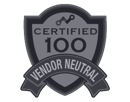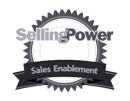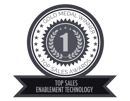sales enablement
Five keys to better sales enablement
Let's dive into the key elements of an effective sales enablement system, and look at how the technology must support them.
What is sales enablement, and why should you care?
It’s one of the buzziest buzzwords in the industry right now: Sales Enablement. Everyone knows you need it. Top performing organizations have it. Nearly everyone has invested in it at some point.
5 simple steps for sales enablement
Sales enablement may be a term used in larger, metrics-focused organizations. It’s not typically something small-to-mid-sized business leaders may know or care about. So what is it and why is it important for companies of all sizes?
Putting sales effectiveness in the hands of your salespeople… literally
From the beginning of my career, I’ve worked to understand and improve sales effectiveness. I’ve studied what makes sales teams fail and what makes them succeed. I’ve looked at sales strategy, sales management, sales process, sales methodologies and sales techniques, and studied their impact and best practices.
Content marketing Has FAILED. What’s next?
When content marketing first rose to prominence around 2012-2013, it was touted as the next big thing for marketing and sales departments. It promised to deliver a steady stream of highly qualified leads directly into sales departments at a lower cost per lead than had ever been achieved before.
Four steps to sales training that supercharges sales effectiveness
According to the Association for Talent Development, $20 billion is spent on sales training in the US alone. With such a large investment, one might expect sales effectiveness to be on the rise, yet it isn’t.
External Exposure
Podcasts
- Tony Morris interviews George Brontén on the podcast "Confessions of a serial seller"
- Deadly Assumptions that are Killing your B2B Sales - Outside Sales Talk with George Brontén
- SaaS-Story in the Making: Designing a Buyer-focused Sales Process - with George Brontén
- Tibor Shanto, Sales Scrum, interviews George Brontén
- Andy Paul, Sales Enablement: Stop Killing Deals, with George Brontén
- Jonathan Farrington interviews George Brontén about Stop Killing Deals [the book]
- Sales Futurists: The Future of Professional Selling - What Will the New "Normal" Be Like?
- Sales Pipeline Radio: You’re Killing Sales Deals Without Knowing It: George Will Help You Fix It
- Penta Marketing Interviews George Bronten in the Podcast Emerging Stronger™
- Integrity Solutions: Unmasking and defeating deadly assumptions that plague sales organizations
Videos & interviews
- The Top 5 Ways You are Killing Your Sales - Brutal Truth Sales Podcast
- Phil Gerbyshak interviews George Brontén about the Stop Killing Deals book release
- Membrain's Founding Story
- Sales Tools - the Good, the Bad, and the Ugly
- Here's what to consider when adding or switching your CRM
- Productivity, efficiency, effectiveness – what’s what and where to focus?
- How to Build a Sales Process That Drives Successful Behaviors
- Can Checklists Stop Deals from Dying and Help Consistently Achieve Quota?
Guest Posts
- G2Crowd: "How to Get the Most out of Your Sales Technology Investment"
- Saleslounge: Varför dina stjärnsäljare blir dåliga säljchefer
- Saleslounge: Vad är komplex försäljning?
- Vainu: Så blir du en mästare på komplex B2B-försäljning
- CSO Insights: Sales Process Interview, Part 2
- CSO Insights: Sales Process Interview, Part 1
- Richardson: 3 Pitfalls that Still Make Sales Teams Waste Time and Lower Sales Effectiveness
- Smart Selling Tools: How to Stop Fighting the Monster of Sales Technology Complexity









